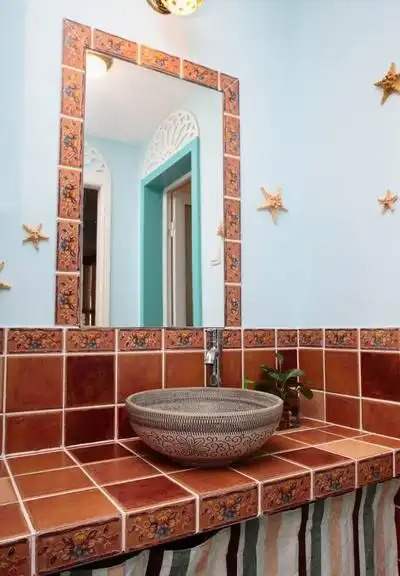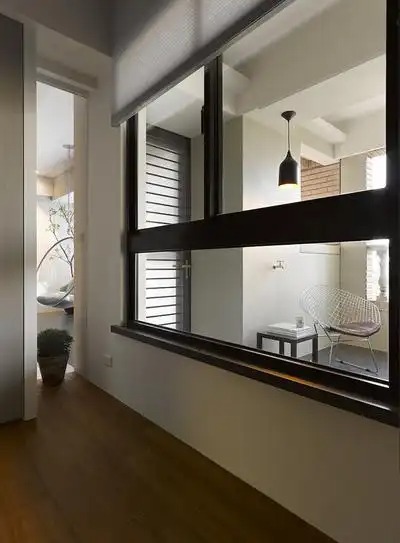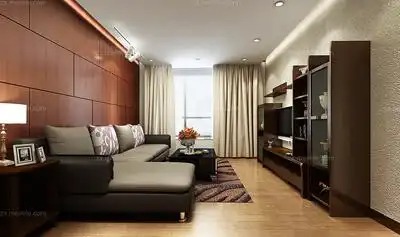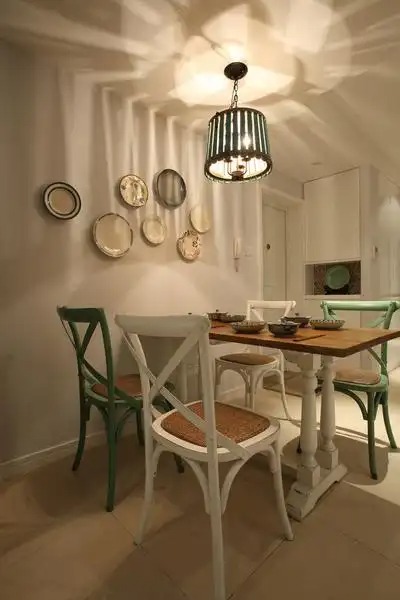Detailed explanation of waxing method for solid wood furniture

1. Panel furniture does not require waxing. Panel furniture is a mid-to-low-end furniture and the most common type of furniture. For daily cleaning, wipe with a damp cloth. More sophisticated furniture can use water-based wax (Plumbeam, spray bottle) to enhance its shine. 2. Lacquered solid wood furniture requires waxing (natural beeswax, semi-emulsified). Lacquered solid wood furniture, which also includes natural rattan and bamboo furniture, should be wiped with a damp cloth for cleaning; for maintenance, use a mid-range wax. 3. Unlacquered solid wood furniture requires high-end waxing (wood oil). Unlacquered solid wood furniture is high-end (unlacquered to highlight the rarity of the wood). Some furniture may have carved or inlaid parts. Maintenance products include oils (orange oil, walnut oil, olive oil, tung oil, etc.) and high-end wax. 4. High-end lacquered furniture (including white lacquered furniture) High-end lacquered furniture and unlacquered solid wood furniture are of the same quality. Maintenance products mainly include soft abrasives and surface restorers.

1. Dust removal: Dust regularly, as dust rubs against the surface of solid wood furniture daily. It's best to use a clean, soft cotton cloth, such as an old white T-shirt or baby wipes. Never use sponges or dishwashing utensils to clean furniture. When dusting, use a damp, well-wrung cotton cloth. This damp cloth reduces friction and scratches, and also helps reduce static electricity that attracts dust, facilitating dust removal. However, avoid allowing moisture to remain on the surface; it's best to wipe again with a dry cotton cloth. 2. Cleaning: To remove marks left on the furniture surface by air pollutants, cooking fumes, stains from manual labor, and polish residue, we recommend using a dedicated furniture cleaner. This solvent can also help remove excess wax. 3. Waxing: Wax furniture regularly, applying a coat of wax every three months. Before applying polish, inspect the finish to ensure it's intact. For newer solid wood furniture, first wipe away any dust with a fine cotton cloth. For older or difficult-to-remove stains, wipe with a cotton cloth dampened with a small amount of gasoline or alcohol. Then, apply a generous amount of polishing wax to a large area with a small cotton cloth. Use a larger, dry cloth to evenly rub the wax in circular motions. Before waxing, remove any old wax with a mild, non-alkaline soap and water. Avoid excessive waxing, as this will clog the wood's pores. Over-waxing can also damage the finish. While American solid wood furniture possesses a simple, natural, and elegant aesthetic, variations in the wood's moisture content can cause warping and cracking, requiring careful care, especially during the sweltering summer months. For example, avoid prolonged direct sunlight, extreme cold or extreme heat, and excessively dry and humid environments. Frequent air conditioning cycles, which cause significant temperature and humidity fluctuations, can cause even qualified solid wood furniture to warp and crack. 4. Temperature Control: Solid wood furniture generally has poor heat resistance, so keep it away from heat sources when in use. Generally, avoid direct sunlight, as strong ultraviolet rays can discolor the finish of solid wood furniture. Furthermore, heaters and lamps that emit strong heat can also warp solid wood furniture and should be kept away from them. Furthermore, avoid placing hot cups, teapots, or other items directly on solid wood furniture, as this can cause burns. 5. Indoor Humidity: The indoor humidity of solid wood furniture must be slightly higher than the furniture's natural moisture content. Therefore, consumers should understand the moisture content of solid wood furniture before purchasing it, and refer to the ambient humidity indicated in the manual. 6. Don't Forget the Mortise and Tenon Structure: Mortise and tenon joints are crucial to solid wood furniture. If they become loose or fall off, the furniture cannot be used. Therefore, regularly inspect these joints for signs of loose components, debonding, broken tenons, or loose mortises. If a screw or other component becomes loose, clean the screw hole, fill it with a thin wooden strip, and then reinstall the screw. If the tenon breaks, call a professional for repair. Seventh, Daily Care: Avoid prolonged exposure to sunlight on the furniture surface, as this can easily cause the wood's internal moisture balance and cracks. In the dry conditions of autumn and winter, regular artificial humidification is necessary to replenish excess moisture, such as frequently wiping the furniture with a damp cloth. Maintain a good humidity level, ideally around 40%. If air conditioning is used regularly, place a basin of water nearby. Avoid large temperature fluctuations, such as turning the air conditioner on and off, which can cause drastic temperature swings. Avoid placing overheated items directly on the furniture surface, as this can damage the protective paint and wax.

Waxing steps for rosewood furniture: 1. First, wipe the furniture with a clean rag to remove any dust. Wipe dust-prone areas thoroughly, ensuring the surface feels smooth and greasy. Avoid mixing dust with the wax, which can cause stains. 2. Apply a moderate amount of wax to the brush and gently spread it. Be careful not to apply too much wax. Apply just enough wax to coat the edges, then the center. Avoid excess wax on the edges, as this will dry out thin areas and leave thicker areas completely dry. 3. After applying the wax, wait 3-4 minutes. If the wax is still not completely dry, wipe off any excess wax with a towel, leaving only a thin film. 4. After wiping off any excess wax, wait about ten minutes. Once the wax film is completely dry, buff vigorously with a cotton cloth or towel. This will improve the smoothness and gloss of the furniture's surface.

You can soften floor wax, beeswax, or other waxes in the sun or by the stove. Use an old shoe brush to repeatedly rub the brush until it is covered with tiny, melted wax particles. Then, use this wax-soaked brush to repeatedly brush the furniture. This method is called "dry shake waxing." After this treatment, dull furniture instantly regains its luster, more effectively than women's makeup. You can also wax directly with commercially available Pledge or floor wax. Be careful to completely remove dust before waxing, as this will cause wax spots and scratches from wear. When waxing, apply gradually and evenly, starting with light and working your way deeper, from spot to surface. Ideally, you should consult a professional waxing company. Another method is hot waxing: apply dry wax to the furniture surface, then use a hot hair dryer to dissolve it into a liquid. Apply it evenly with a brush. Let it cool and solidify, then remove any loose wax with a piece of wood or bamboo. Finally, use a brush and cloth to shake it clean and polish. This is a more professional and difficult method. If not done properly, the patina may become "new". It is not recommended for amateurs and novices to use it rashly.

Characteristics of solid wood furniture: 1. Healthy and environmentally friendly. Solid wood furniture, made from natural wood without the use of glue or adhesives, meets consumer environmental protection requirements. 2. Natural beauty. The wood used in solid wood furniture has a natural grain pattern that is aesthetically pleasing. 3. Durable. Solid wood furniture is made of high-quality materials and craftsmanship, making it durable and some pieces can even be passed down through generations. The biggest drawback of solid wood furniture is its tendency to warp. Therefore, when purchasing solid wood furniture, be sure to choose products from reputable brands. Some reputable manufacturers use rigorous drying processes to keep the wood's moisture content within a specified range. This prevents deformation and provides guaranteed after-sales service. Furthermore, fluctuations in moisture content can cause deformation in solid wood furniture. Therefore, care should be taken during use. For example, keep it out of direct sunlight and avoid excessively hot or cold temperatures. Excessively dry or humid environments are also unsuitable for solid wood furniture. How to care for your solid wood furniture: ● Dust removal: Dust regularly, as dust rubs against the surface of solid wood furniture daily. It's best to use a clean, soft cotton cloth, such as an old white T-shirt or a baby diaper. Never use sponges or dishwashing detergent to clean your furniture. When dusting, use a damp cotton cloth. This reduces friction and scratches, and helps reduce static electricity that attracts dust, making it easier to remove dust from the surface. To avoid moisture remaining on the surface, it's recommended to wipe again with a dry cotton cloth. When dusting furniture, remove any decorative items and be gentle when moving. ● Polishing: In addition to regular dusting, solid wood furniture also requires polishing to remove stains and small particles, enhancing its aesthetic appeal. We recommend using a dedicated furniture polish for regular maintenance. There are two common types of polish: one for high-gloss finishes and one for matte or low-gloss finishes. Also, avoid polishes containing silicone, as silicone can soften and damage the finish and clog the wood's pores, making repairs difficult. While frequent polishing won't harm the finish, we recommend limiting it to 2-3 times a year. Over-polishing can damage the finish. Here's a recommended polishing procedure: ■ Apply the polish to a clean, soft, white cloth, preferably made of natural fibers like cotton. Use the polish sparingly, as a small amount lasts longer. ■ Rub the polish onto the furniture, following the direction of the wood grain. Use the other side of the cloth, and if necessary, a separate soft cloth, to remove any excess polish. * Avoid excessive rubbing during polishing. Excessive rubbing can actually damage the matte finish and, in severe cases, result in an uneven sheen. ● Cleaning: To remove airborne pollutants, cooking fumes, smudges, and polish residue, we recommend using a dedicated furniture cleaner. This solvent also helps remove excess wax and prepares the furniture for polishing. While dedicated furniture cleaner can be used frequently without damaging the finish, we recommend using it only 2-3 times a year. Here's how to clean: ■ Apply a small amount of furniture cleaner to a clean, soft, cotton cloth. ■ Wipe the furniture surface in the direction of the wood grain, then flip the cloth over and wipe again until all the cleaner is removed. ■ Implement an appropriate furniture polishing procedure. Regardless of the cleaner you use, it's best to test a small, inconspicuous area before fully polishing your furniture to ensure the finish hasn't softened or been removed, or to ensure there aren't any other adverse reactions. ● Waxing: We recommend against waxing your solid wood furniture. Waxing doesn't improve a high-quality finish, and wax stains can dull the wood. Solid wood furniture uses a high-quality finish and doesn't require waxing. If there is any damage, consult a furniture repair specialist.

Solid wood furniture is mainly divided into traditional and modern types. Traditional hardwood furniture generally has no lacquer finish, but is simply waxed. Newly manufactured hardwood and other solid wood furniture now has a lacquer or clear coat for protection. Maintenance methods for different types of solid wood furniture vary. 1. Solid wood contains water, so low humidity causes hardwood furniture to shrink, while high humidity causes it to expand. Solid wood furniture is typically manufactured with a shrinkage barrier, but care should be taken when storing it. Avoid excessively humid or dry areas, such as near stoves or heaters, or in damp basements, to prevent mold and cracking. 2. If solid wood furniture gets greasy, leftover tea is an excellent cleaner. After wiping, spray a small amount of cornstarch on it and wipe it clean. Finally, wipe it clean. Cornstarch absorbs all dirt adhering to the furniture's surface, leaving the finish smooth and shiny. 3. If the solid wood furniture has a white lacquer finish, which can easily yellow over time, wipe it with a rag dipped in toothpaste, being careful not to apply excessive pressure. You can also mix two egg yolks and apply them to the yellowed areas with a soft brush. Once dry, carefully wipe clean with a soft cloth. 4. Avoid placing heavy objects on furniture for long periods of time, as this can cause the furniture to warp. Even for solid wood tables, do not place non-breathable materials like plastic sheeting on the surface. 5. Avoid rubbing the furniture against hard objects to avoid damaging the paint and wood grain. Be especially careful when placing decorative items such as porcelain and bronze, and preferably place a soft cloth under the surface. 6. Uneven floors can cause furniture to warp over time. To prevent this, use small pieces of wood to level them. If the floor is damp, raise the legs of the furniture appropriately to prevent moisture from corroding them. 7. Never use a damp or rough cloth to clean solid wood furniture. Use a clean, soft cotton cloth, apply a little furniture wax or walnut oil, and gently rub back and forth along the wood grain.

First, glue the cracks shut, then repaint. This process sounds simple, but it requires professionalism. To ensure the beauty of your furniture, I recommend hiring a professional. I've been painting furniture for eleven years and won't lie.

This is some information I found online at Wuhan Home Decoration Online. If you have any questions about home renovations, you can check it out; you should be able to find what you need. The following is for reference only: Maintenance of Solid Wood Furniture: Solid wood furniture is beloved by consumers for its natural wood feel, but little is known about its maintenance. While furniture selection is important, furniture maintenance is equally essential. The quality of furniture maintenance directly impacts its lifespan. So, how should solid wood furniture be maintained? In summary, the following points should be noted: 1. Maintain and clean the furniture surface. Solid wood furniture is painted, so maintaining and preserving the paint film is particularly important. Damage to the paint film not only affects the surface aesthetics but also the internal structure of the product. Therefore, you should always keep your furniture clean. Gently wipe away any dust from the surface with a soft, dry cotton cloth daily. Periodically, carefully wipe away any accumulated dust from the corners and crevices of the furniture with a well-wrung damp cotton ball. Then, wipe dry with a clean, dry, soft cotton cloth. After drying, you can also apply a thin layer of high-quality polish, gently rubbing it like leather to bring out the shine. This not only preserves the wood furniture but also enhances its shine. However, be careful when choosing polish; avoid inferior products containing corrosive chemicals. 2. Avoid using alcohol, gasoline, or other chemical solvents to remove stains. If stains are found on the furniture surface, do not rub vigorously. Instead, gently remove the stain with warm tea. Once the moisture has evaporated, apply a small amount of polish to the affected area and gently rub it several times to form a protective film. 3. Avoid scratches from hard objects. When cleaning, avoid touching furniture with cleaning tools. Also, be careful not to allow hard metal or other sharp objects to collide with furniture to protect the surface from scratches. 4. Avoid humid environments. If the room is damp in summer, use thin rubber pads to separate the areas where the furniture touches the floor. Also, maintain a 0.5-1 meter gap between the furniture and the wall. 5. Keep away from heat sources. In winter, it's best to place furniture about 1 meter away from heating sources to avoid prolonged, high temperatures that can cause cracking, warping, and deterioration of the wood and the paint film. 6. Avoid direct sunlight. Avoid prolonged exposure of all or part of the furniture to outdoor sunlight. Ideally, place the furniture in a location shielded from direct sunlight or use sheer curtains to block direct sunlight. This will not only preserve the indoor lighting, but also allow the soft light to add a touch of warmth and romance to the room while protecting the furniture.

Furniture finishing refers to the process of applying a variety of modern coatings (paints) to furniture, creating a coating with a range of decorative and protective properties after multiple applications of color and drying. This coating, the outermost layer of furniture, acts as a beautiful outer layer, largely determining its appearance, color, quality, grade, and value. Therefore, finishing is a crucial aspect of furniture manufacturing. Solid wood furniture or furniture veneered with solid wood veneer (such as sliced veneer and turned veneer) still accounts for a significant portion of the current domestic and international furniture market. Wood is a sustainable natural material. Its warm texture, soft touch, and rich, beautiful, and natural grain have made it an integral part of human life since ancient times. However, wood has drawbacks such as its complex structure, susceptibility to moisture absorption and release, resulting in expansion, contraction, and deformation, as well as its susceptibility to decay, dirt, and porosity. For this purpose, finishing is essential. Finishing can impart a variety of colors and textures to wood, adding a touch of diversity to wood and its products, enriching people's lives and creating a more comfortable environment. To achieve high-quality coating results and implement efficient coating projects, one must first fully understand the properties of the wood substrate, such as the hardness, pore size, and color depth. Only after gaining a thorough understanding of the properties of the wood to be coated, and then selecting the appropriate coating and coating process, can the unique natural texture of the wood be fully expressed, thereby achieving the ideal coating effect. I. Coating Design |E~c#lV Coating design refers to the plan developed to achieve the purpose of a coating. In addition to protecting the wood substrate, wood coating design also enhances the aesthetics of the finished product. The aesthetic value of furniture products is primarily determined by vision and touch, often influenced by subjective personal tastes and preferences. Factors considered include texture, color, transparency, density, depth, wood grain, coating texture, after-film feel, and gloss. A balance must be achieved between these, meaning that opposing sensations must be reconciled, such as warmth-cold, roughness-smoothness, wetness-dryness, lightness-heaviness, and hardness-softness, to maximize consumer comfort. 3a:Hx| Yg When a finished piece of furniture is displayed in a store or a user's home, its overall finish and quality are the cumulative result of all steps and links in the coating process. Therefore, everything from the selection of colorant, primer, and topcoat to the specific coating technique is a significant factor. The various considerations are detailed below: 1. Coating Selection: The following factors are often considered: 1) Wood species and properties; 2) Required coating film properties; 3) Aesthetics of the coated product; 4) Practicality of the coated product; 5) Price of the coated product. 2. Deciding on the Coating Project: 1) Tinting (related to hue, concentration, substrate, duct preparation, and coating film coloring); 2) Primer (related to wood species, tinting, and other pre- and post-processes); 3) Midcoat (related to visible or closed pores, thin or thick coatings); 4) Grinding (related to substrate grinding, coating grinding, and sandpaper coarseness); 5) Topcoating (related to finish, glossiness, hardness, texture, etc.). 3. Coating Technology: 1) Understanding of coating types, properties, and curing mechanisms; 2) Coating blending and viscosity adjustment; 3) Adjustment and operation of coating equipment; 4) Setting and managing drying conditions; 5) Grinding methods and operating techniques; 6) Creation of a suitable construction environment (temperature, humidity, lighting, dust removal, etc.). II. Analysis of Coating Purpose: Products that undergo appropriate coating often gain protection, enhance their aesthetics, and possess certain functional properties. 1) Protection: Coated products should be durable, and the coating's physical and chemical properties should be able to withstand testing according to relevant national standards (such as adhesion, liquid resistance, heat resistance, impact resistance, temperature fluctuation resistance, wear resistance, and gloss). 2) Aesthetics: Coated products are often evaluated emotionally and visually, judging their aesthetics and the sense of transparency, stability, moisture, touch, comfort, elegance, and luxury. 3) Functionality: Some furniture coatings are sometimes specifically required to possess certain functional properties, such as identification, conductivity, insulation, lubrication, fire resistance, anti-slip, anti-static, anti-fog, anti-condensation, flame resistance, mildew resistance, termite resistance, insect repellency, insecticide, temperature indication, sound absorption, and antibacterial properties. 7Tk//By7 3. Finish and Finish Texture QOEi.b8r 1) Oil Finish (Varnish Finish): A popular method in some Nordic countries for finishing solid wood furniture with a readily penetrating paint (mostly oil-based). The paint penetrates the wood's interior, leaving only a very thin film or almost no film on the surface. This method best preserves the wood's unique natural texture. However, the lack of a film provides minimal protection, making the surface highly susceptible to contamination and damage. 7) QZ

Frequently dust furniture with a soft cloth, following the wood grain. Before dusting, apply a little spray cleaner (Pure Pearl) to the cloth. Do not wipe with a dry cloth to avoid scratching. When using solid wood furniture in a dry environment, artificial humidification is required. For example, regularly wipe the furniture with a soft cloth dampened with water. Wax the furniture regularly, applying a layer of paste wax every 6-12 months. Before waxing, wipe off any old wax with a mild, non-alkaline soap and water. Whenever possible, place mats under hot plates to prevent food or soup from spilling and staining or damaging the tabletop. Minimize contact between furniture and corrosive liquids, alcohol, nail polish, and lacquer remover. Tips for removing stains: Repairing scratches and dents: A simple method is to use a cotton ball or paintbrush to apply a similarly colored shoe polish to the surface of the furniture. To remove water stains: Place clean absorbent paper on the stains and press hard with a heated iron. You can also apply salad oil or toothpaste, then wipe it dry and apply wax. To remove white stains: Apply a mixture of cigarette ash and lemon juice or salad oil on a cloth, wipe it dry and apply wax.

Furniture waxing mainly needs to choose furniture wax with natural beeswax, which can promote the formation of patina. Professionals generally use old brands, such as Tiger Head Hotolube, Lao Miao, Yi Sanyuan, etc. It mainly depends on the ingredients.